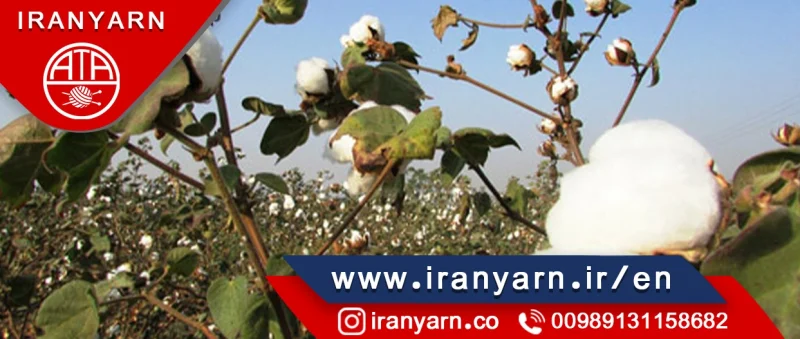India
Cotton traded steady tone across major spot market of north India on Friday. Prices were quoted up to 10-20 / maund yesterday evening. Today weather clear. New crop – cotton traded at ready delivery – In Punjab, Rs 7,000-7,100 a maund. In Haryana, it offered at Rs 7,050-7,150 a maund. while in Upper Rajasthan, quoted readty delivery at Rs 7,00-7,150 a maund.
Cotton spot prices steady tone across west India market on Friday. Sankar-6, new crop 29 mm (RD-75 & MIC-3.8), in Gujarat traded at Rs 70,000-71,000 a candy and 28.5mm (RD-74) quoted at Rs.69,000-70,000 a candy. V-797 trade at Rs 49,500-50,500 (12-15% trash condition) a candy. While in Maharashtra, new crop good grade cotton (29mm) quoted at Rs 69,500-70,000 a candy.
Cotton spot price was steady tone across the major trading centers of south India.
Pakistan
Pakistan's textile units shut down due to shortage of cotton after floods: The already fragile Pakistan economy, hit hard by the devastating floods, now faces the shutdown of textile factories as the cotton crop has been destroyed. Cotton shortage has forced the owners to shut down textile factories after the floods. The mill closures underscore challenges for the sector that employs about 10 million people, accounts for 8 per cent of the economy and adds more than half to the nation's export earnings, reported Geo News. While the larger firms are less affected as they are well stocked, Pakistan's small factories making bedsheets and towels for export to the US and Europe have started to shut down, The News reported. Pakistan Textile Exporters Association's patron-in-chief Khurram Mukhtar said that a shortage of good quality cotton, high fuel costs, and poor recovery of payments from buyers are the reasons behind the closing of small textile mills. Mukhtar said that larger firms supplying global companies like Nike, Adidas AG, Puma SE, and Target Corp are well stocked and hence, they are less affected, reported Geo News. The recent floods, which submerged a third of Pakistan, killed more than 1,600 people, and damaged about 35 per cent of the cotton crop, reported Geo News. The latest blow comes at a difficult time for the South Asian nation already struggling with high inflation and falling currency reserves. Due to an “unforeseen downturn in the market and unavailability of good quality cotton” following heavy rains and floods, the company's mills have been temporarily closed, Faisalabad-based AN Textile said in an exchange filing earlier this month, reported Geo News. Cotton production in Pakistan could slump to 6.5 million bales (of 170 kilograms each) in the year that started in July, compared with a target of 11 million, Mukhtar said. That could force Pakistan to spend about USD 3 billion to import cotton from countries such as Brazil, Turkey, the US, East and West Africa and Afghanistan, said Gohar Ejaz, patron-in-chief of All Pakistan Textile Mills Association. About 30 per cent of Pakistan's textile production capacity for exports has been hampered because of cotton and energy shortages, Ejaz said. Pakistan's textile sector, which exports about 60 per cent of its production, is also facing poor demand in the domestic market due to fragile economic conditions.
Bangladesh
Bangla RMG exports to hit $95 bn by 2030 if 12% of MMF market grabbed: 06 Oct '22 – Bangladesh’s apparel exports will cross $95 billion by 2030 if the country can expand its share in the global market for man-made fibres (MMF) to 12 per cent from less than 5 per cent now, according to a study by the Policy Research Institute (PRI), whose research director Mohammad Abdur Razzaque called for additional cash incentives for MMF apparel exports till 2026. Till Bangladesh graduates from the least developed country (LDC) status in 2026, the government should attract foreign investment in the MMF sector so that the country becomes a regional supply hub, Razzaque, an author of the study, said. MMF apparel items accounted for $222 billion of the $440 billion global garments market last year, when cotton-based products contributed $190 billion. Almost half of all apparel exports worldwide are of MMF products, while 42 per cent are cotton-based garment items. The scene is, however, opposite, in Bangladesh, where 72 per cent of the garment exports are cotton-based and just 24 per cent are MMF, the study found. Of the total $42 billion apparel exports from Bangladesh in the last fiscal, $30 billion were cotton-based garments. As China, the largest cotton apparel supplier now, has been losing its market share, Bangladesh, which now accounts for 16 per cent of all cotton apparel shipments worldwide, is poised to become the largest cotton-based garments exporter. Global MMF apparel exports grew by 4 per cent while that of cotton-based items shrunk by 0.5 per cent annually between 2011 and 2019. Cotton apparel exports then fell by some 15 per cent in 2020, while MMF garment shipments saw robust growth of 8 per cent in 2021. The share of MMF apparel exports from China increased from 37 per cent of the country's total garment shipments in 2010 to 74 per cent in 2021. Similarly, the share of MMF apparel shipments rose to 57 per cent from 38 per cent in Vietnam, 32 per cent from 15 per cent in India and 26 per cent from 13 per cent in Cambodia at the same time, Bangladeshi media reported citing the study. The share of MMF garment exports from Bangladesh increased to 24 per cent from 18 per cent of the country's apparel exports during the period, the study found. Due to uncertainty in cotton production and supply, price comparability and advantages offered by these products like higher durability, water- and wrinkle-resistance, and colour retention, the global demand for MMF-based apparel items has been growing. There are environmental concerns as well. Global fibre production stood at 109 million tonnes in 2020, when MMF accounted for 68 per cent (close to 80 million tonnes). MMF production worldwide is expected to reach about 110 million tonnes by 2030, when the market will be worth around $100 billion compared to $62.7 in 2021. MMF comprises around 30 per cent of Bangladesh's total fibre imports now, with China being the largest source









